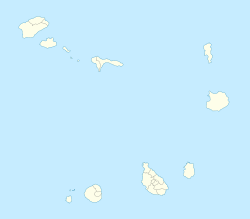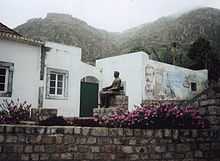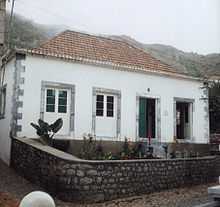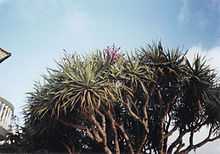Nova Sintra
| Nova Sintra | |
|---|---|
|
Catholic Church | |
 | |
| Coordinates: 14°52′16″N 24°41′46″W / 14.871°N 24.696°WCoordinates: 14°52′16″N 24°41′46″W / 14.871°N 24.696°W | |
| Country | Cape Verde |
| Island | Brava |
| Municipality | Brava |
| Civil parish | São João Baptista |
| Population (2010)[1] | |
| • Total | 1,536 |
Nova Sintra is a town in the central part of the island of Brava in southwestern Cape Verde. It serves as the seat of the Brava Municipality. Its population is about 1,500. It is named after the Portuguese town of Sintra. Agriculture is the predominant source of income on Brava. Tourism is less developed, but there are a few small hotels and guest houses. Nova Sintra is linked with roads to the northern, the eastern, the southcentral and the western parts of the island as well as to the former airfield. The "aluguer" buses to the other villages start from Praça Eugénio Tavares.
International relations
Nova Sintra is twinned with:
Sights

Monument of Eugénio Tavares.

Museum.

Dragon tree opposite the bank.
- Nova Sintra's popular fame is Eugénio Tavares, a famous Capeverdean writer. There is a monument of him beside the house where he lived which is museum today. It is located in a garden with pine trees, other trees and flowers including roses and sunflowers.
- The square Praça Eugénio Tavares is the center of town. There is a well-kept park, a music pavillon, a post office, a bank, a pharmacy and the city Hall. The Protestant church Igreja do Nazareno is the oldest church of the island. Opposite the bank one of the rare dragon trees (Dracaena draco) can be seen.
- The Catholic Church is worth a visit. It was built around 1880. There is also a New Apostolic Church, an Adventist Church, a Kingdom Hall of Jehova's Witnesses and a parish of the Church of Jesus Christ of Latter Day Saints in Nova Sintra.
- Rua da Cultura is a historic street in the center of the town. Well-preserved colonial architecture can be seen here.
- In the Eastern part of the town there is a sightworthy monument and viewpoint shaped like a ship. The name "Santa Maria" which is painted on the ship refers to the ship of Christopher Columbus. From here there is a beautiful view over the village of Santa Bárbara to the East coast of Brava and the harbour of Furna. There are similar monuments in other villages as well, e.g. in Campo Baixo in the South of Brava.
Historical population
| Year | Population |
|---|---|
| 1990 (Census) | 1,890 |
| 2000 (Census) | 1,930 |
| 2010 (Census) | 1,536 |
References
- ↑ "2010 Census results". Instituto Nacional de Estatística Cabo Verde (in Portuguese). 17 March 2014.
| ||||||||||||||
